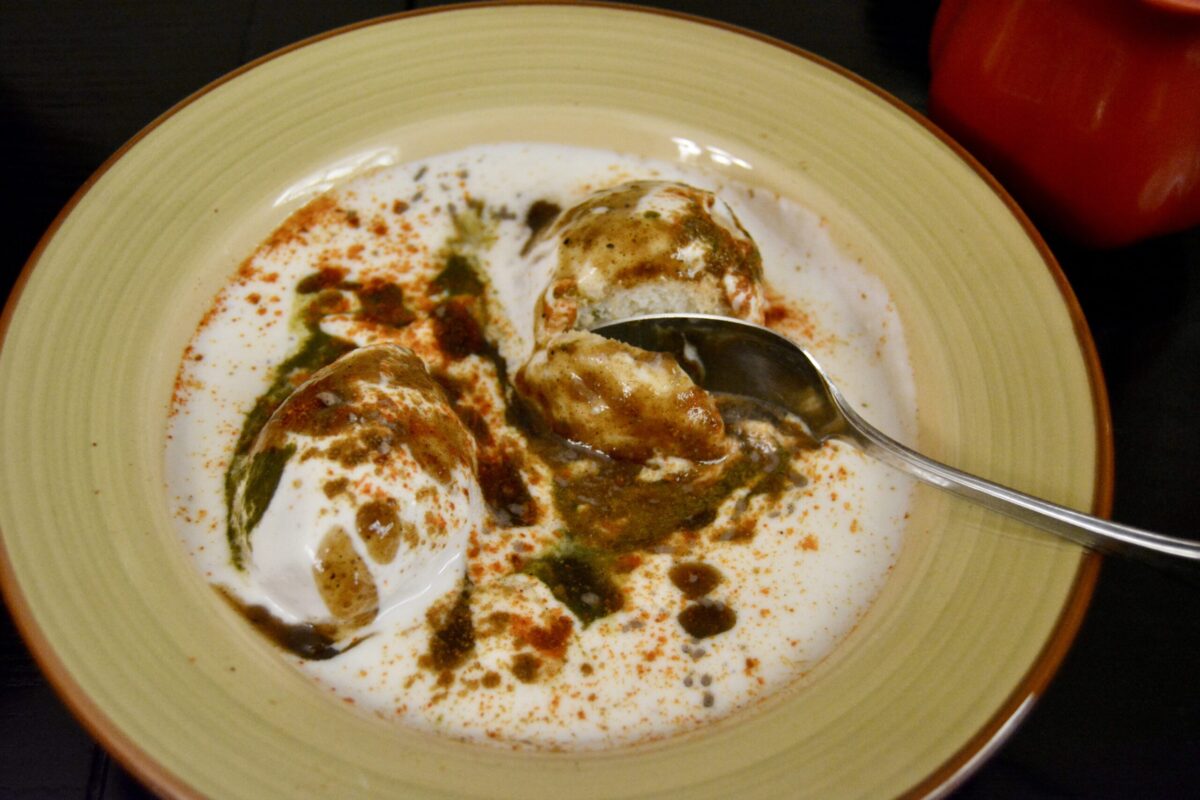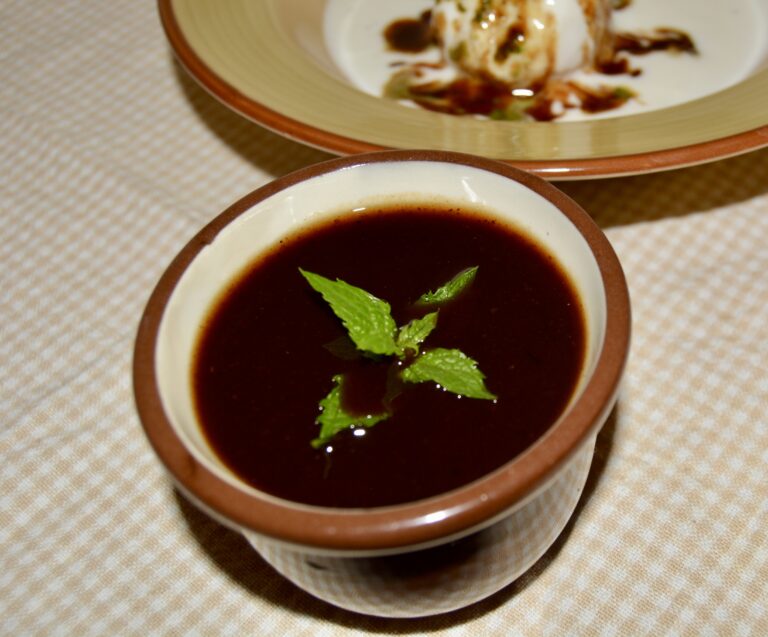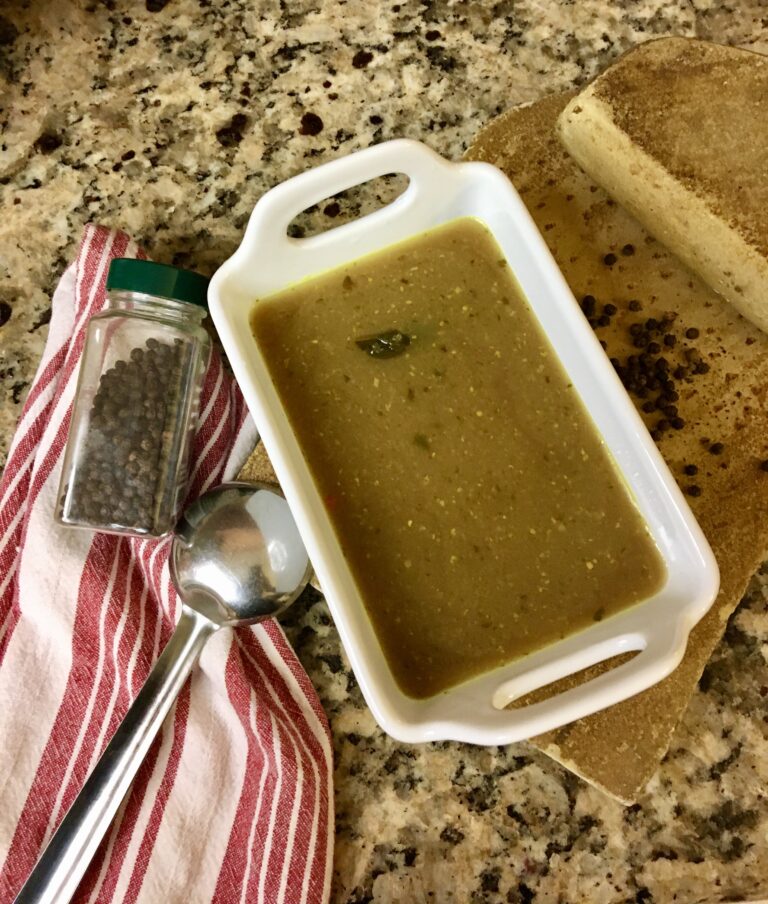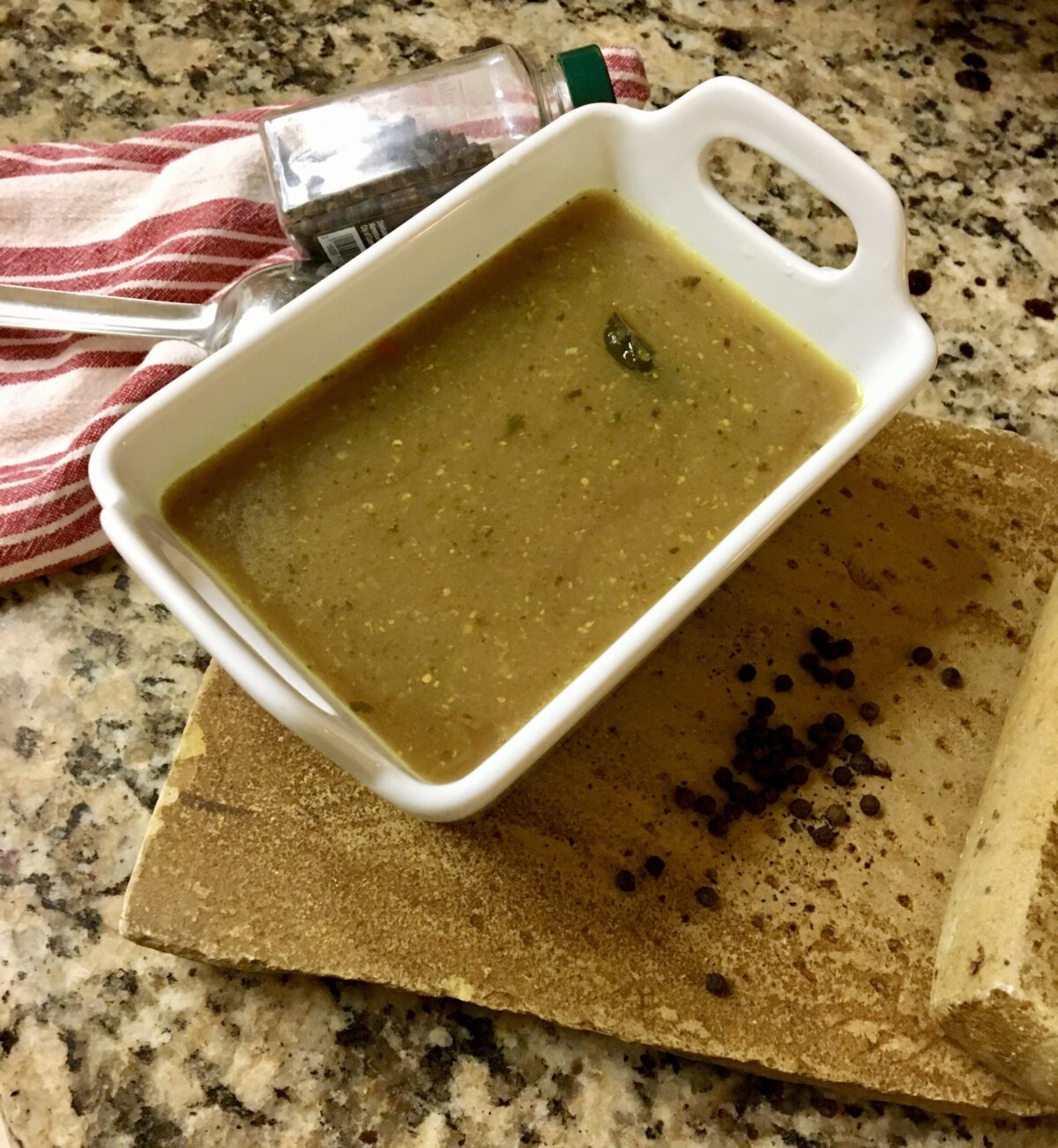Sunday was our day for Pepper Water, a South Indian dish called Dal Rusum. Mama being from the south and Father from the North, coupled with the fact that we traveled all over the Indian subcontinents as Military brats, gave us a whole range of Indian cuisine to sample. Further, my husband being in the Indian Air Force enhanced that culinary adventure further for me.
Rusum was one of our favorite meals growing up. Cook would fix a whole lot of it under Mama’s tutelage. It was served with plain boiled rice and pepper chops. The combination was just plain yummy!
When fixing rusum, be sure to have two 5-6 quart pots and a sieve handy to strain the rusum. Also keep a large skillet or frying pan nearby for tempering. You will need them when boiling the lentil and when tempering it.
Cooking rusum can be tricky when making it the first time. To make things easier for you, have all your ingredients ready before you start. Separate the ingredients in steps 1-4. It will make things less confusing for you.
Rusum (Pepper Water) is a South Indian dish made from crushed pepper, tamarind, lentils, and spices.
- 1½ cups toor/arhar dal (pigeon peas)
- 1 tsp tumeric powder
- 1 heaped tsp tamarind paste
- 1 small pod garlic (or 8 large flakes)
- 20 whole peppercorns
- 1½ tsp whole cumin seeds
- 3 cups fresh cilantro (loosely packed cups)
- 2 medium dried red chilies (broken into bits)
- 1 tsp black mustard seeds
- 8 curry leaves (add more less to taste)
Step 1: Preparing the Dal Water
Boil the dal in 6-7 cups of water with salt and turmeric until the dal is tender. Approximately 35-40 minutes.
Strain the dal through a sieve, pouring the dal liquid into another large pot. Set strained dal aside.
Step 2: Adding the Tamarind Paste
Step 3: First Tempering / Tadka for Dal Water
Coarsely grind the garlic flakes, cumin, fresh green cilantro, pepper corns, and turmeric powder. You can use your chopper, blender, or pestle.
Heat about 2 tablespoons of cooking oil in a fairly large saucepan or skillet.
Add the coarsely ground mixture and sauté for about a minute or until you can smell the aroma. It doesn't take long! Make sure to stir it often, so it does not burn.
Pour this into the dal water. Put the pot back on stove and return to boil. Let it boil for about 10 minutes.
Now strain the water again into the other empty pot, making sure to squeeze all the juice out of the tadka mixture so the essence of it is not lost. Your rusum is ready for the second tempering.
Step 4: Second Tempering of the Rusum
Heat oil, and add ¾ teaspoon of mustard seeds. Be careful, as they splutter. Now add the 2 dry red chilies and the fresh curry leaves. Stir for about 10 seconds and then pour it over the pepper water.
Tempering / Tadkafor the Dal
Same as the rusum. Heat the oil and add the remainder of the mustard seeds, red chilies, and curry leaves. Stir for about 10 seconds and then pour over the dal. Toss gently into the dal.
Serve the rusum/pepper water and dal along with meat pepper fry and plain boiled rice.
To make your own tamarind paste: Take a golf-sized lump of freshly peeled tamarind, place in a cup of warm water, then extract the tamarind juice by squeezing the pulp out into a bowl, and then strain the thick juice.
Since different brands of Tamarind vary in tartness, start with a little less than the tamarind called for. If it’s not tangy enough for your taste, then adjust to your liking. If by some chance it gets too sour, don't panic. Just boil a half cup more of the lentil and add it to the Rusum.
I now prefer to add the strained dal back into the rusum after I strain the first tadka. That way, I do not have to temper the dal separately.
You may want to set the table with soup bowls and spoons for easier handling of the pepper water and rice.
You can also drink this as a spicy soup-especially when you have a cold or recovering from a bout of flu. The tanginess, garlic, cilantro and pepper takes care of any residual yukiness !! I remember mom used to have Cook fix it anytime we were recovering from being sick. It tasted so good!




